I've talked about HMS Warrior a lot, as befits the world's first seagoing iron-hulled ironclad, a ship that set the pattern for the next 80 years of capital ships. But this is mostly looking at her systems, not at the ship herself. This revolutionary vessel, preserved today at Portsmouth, deserves a closer look.
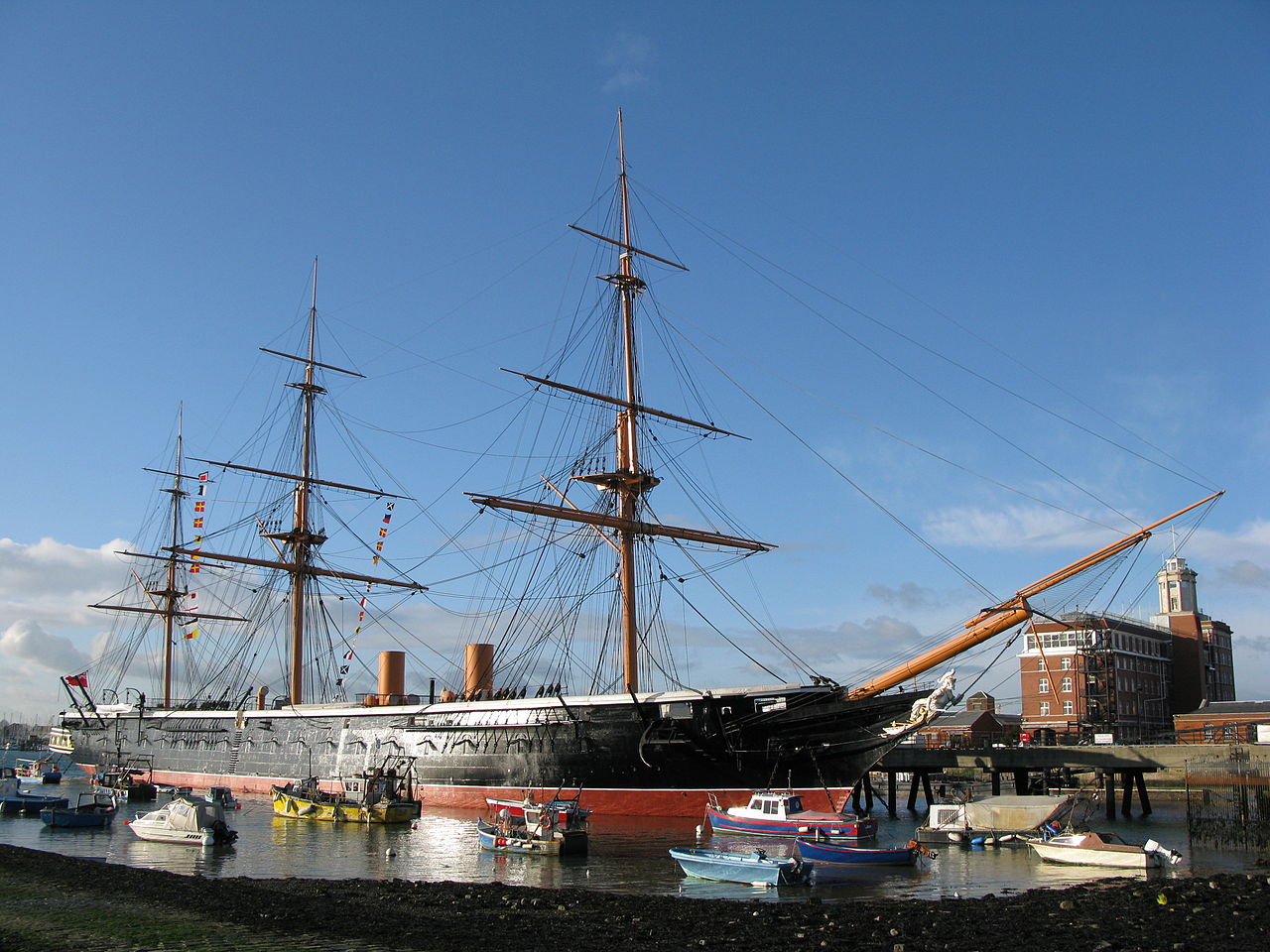
Warrior today
The rivalry between Britain and France goes back centuries, and despite the British victory in the Napoleonic Wars, the rivalry quickly resumed. The French, realizing that British command of the sea was critical to their victory, spent the first half of the century attempting to use one technological edge or another to wrest it away from them. They introduced both shell guns and steam power for capital ships, and found themselves outbuilt in both areas. Tensions lapsed during the Crimean War, and Napoleon III, inspired by the terrible effects of shells on wooden ships, asked for 10 floating batteries armored with iron plate. French industry could only make five, so the other five were built by the British. The French batteries saw action briefly, destroying Russian fortifications at the Battle of Kinburn.
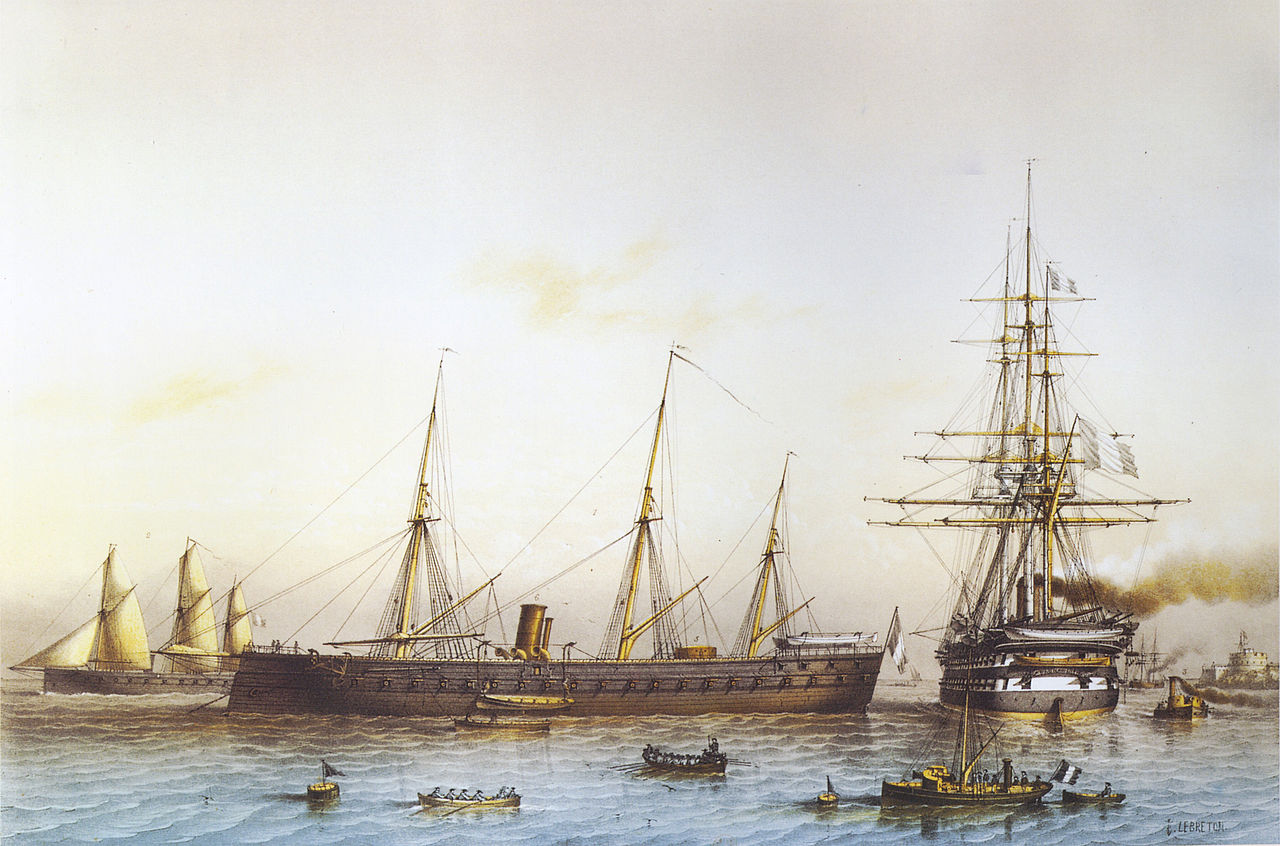
Gloire with a wooden two-decker
Despite the brief alliance, tensions between the two nations spiked again after the war. The late 1850s saw the French briefly draw even in steam battleships, provoking an invasion scare made worse by the laying down in 1858 of Gloire, the world's first ironclad battleship. However, industrial limitations in France meant that her designer, Dupuy de Lome, although a leading advocate of iron shipbuilding, was forced to build her hull from wood. She was otherwise a fairly conventional vessel, essentially a steam-powered two-decker of the day cut down to a single deck and fitted with 4.5" iron armor. She was to be joined by five other ironclads, one with an iron hull, although this ship, Couronne, was completed after Warrior.
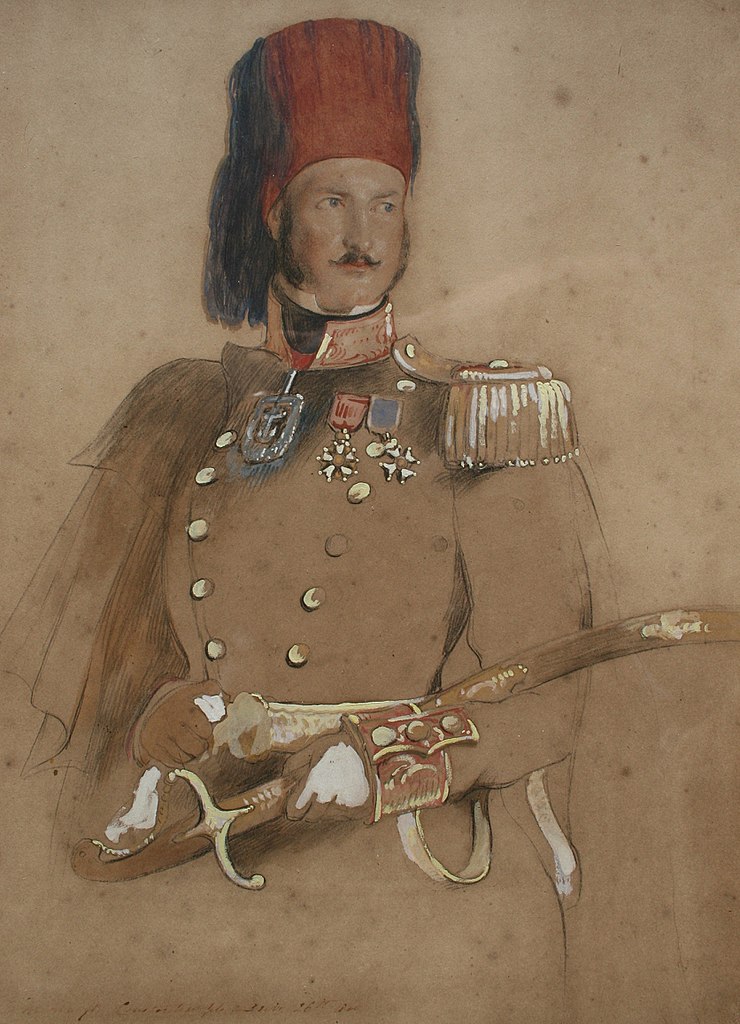
Baldwin Walker while in service with the Ottoman Empire
Although there was still substantial skepticism in Britain towards iron shipbuilding and armor, this was enough to force the government's hand, at least to the extent of countering the French program. The Surveyor of the Navy, Baldwin Walker, drew up a plan for six ironclads, two with wooden hulls to be built in the Admiralty Dockyards, while four more would be constructed in iron by private shipyards.1 This plan was rejected, largely on the advice of a reluctant treasury, and only two ships were to be ordered, both iron-hulled.
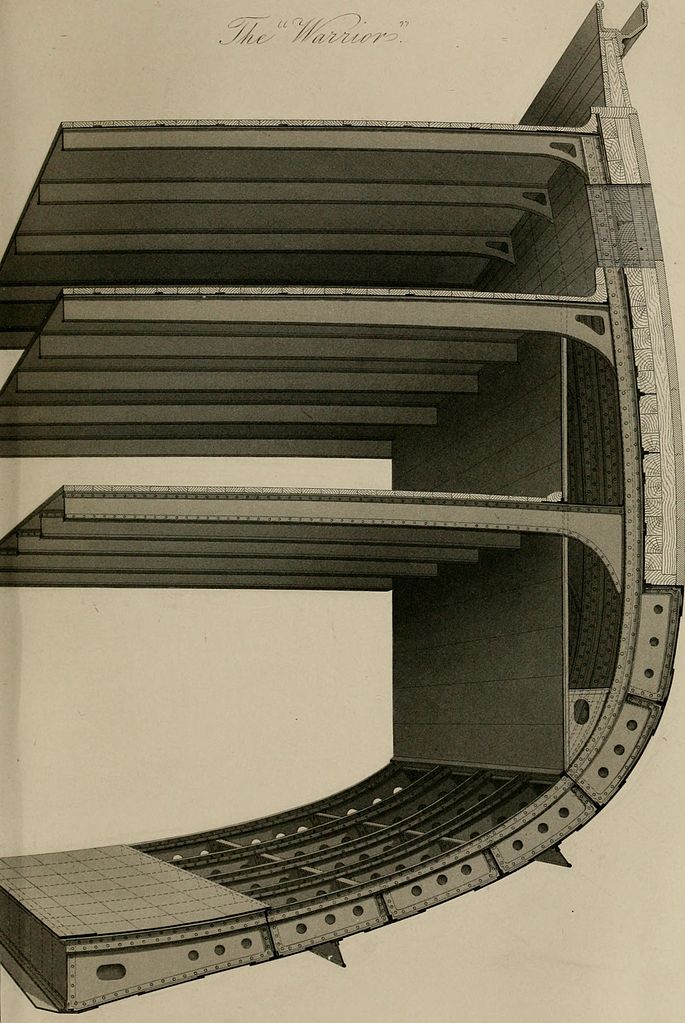
A section of Warrior's hull, a very conservative design that has stood the test of time.
But these were radical ships. While Gloire was a conventional battleship of the day with armor in place of some of her guns, Warrior was built from scratch to make best use of the new technologies. She was the fastest ship afloat and designed to make use of steam power and armor to hit and run, while larger guns than normal allowed her to stand off, maximizing her advantage over the sailing battleships of the day and giving her the capability to pierce armor. The initial design was completed by Isaac Watts, Chief Constructor, and his drawings were circulated to the dockyards and eight private yards, to see if any of them could produce a better design. A wooden hull would be accepted, although a wooden ship would need 4.5" armor from end to end to reduce the risk of fire, while an iron-hulled ship could concentrate its armor into a 200' box amidships, with bulkheads closing the ends of the box.2 A speed of 13.5 kts under steam would be required.
Ultimately, when the results were in, Watts judged his own design to be the best, a verdict borne out by subsequent analysis. A few were too big, while many were underpowered or lacking in stability. The two private yards that had produced the best proposals, Thames Iron Works and Napier of Glasgow, were ultimately rewarded instead with contracts for the ships, Warrior and Black Prince.
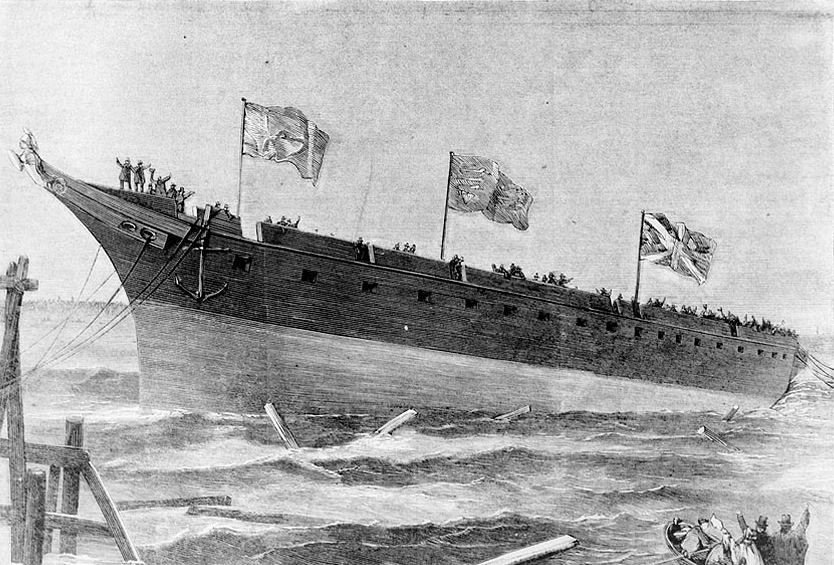
Warrior's launch
The initial contract for Warrior was placed with Thames Iron Works on May 11th, 1859, and her keel was laid two weeks later. The initial plan was for her to be launched in 11 months with completion later, at a cost of £190,225. However, inexperience with construction of iron warships and design changes meant that she wasn't launched until December 29th, 1860, at a cost of £250,000. Fitting out was complicated by bad weather, and she wasn't commissioned until August 8th, 1861. Naval warfare would never be the same.
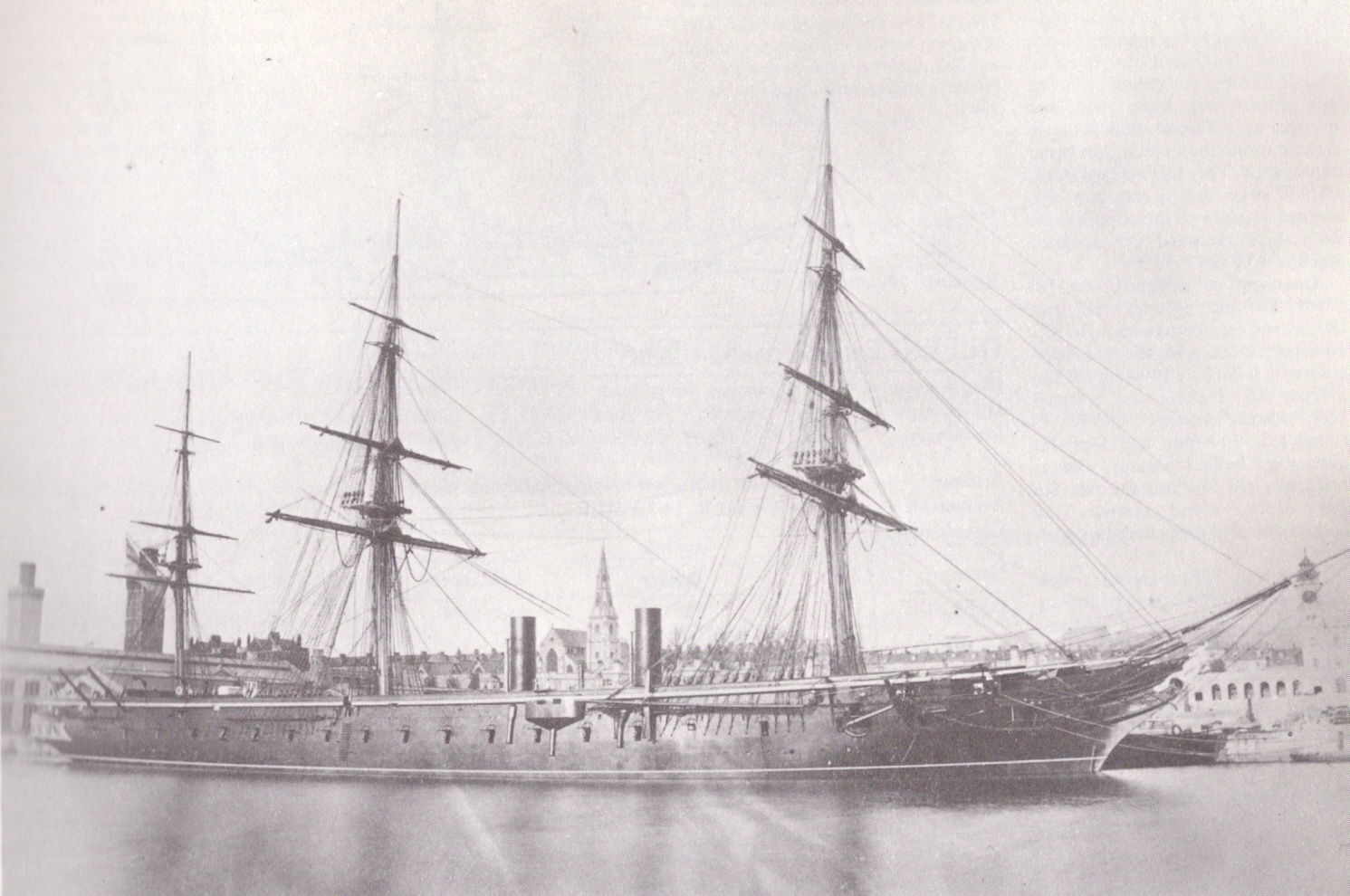
Warrior early in her career
Even an inexperienced observer could tell the difference between the new ship and her predecessors. While Warrior's size, 481' long and 9,210 tons, would have made her stand out, she was also the first British vessel to bear a new paint scheme, departing from the traditional white stripes along the gun deck(s). Her hull was entirely black, lending an air of menace to the new vessel. The paint scheme would remain in use for the next four decades, when it was replaced by grey.
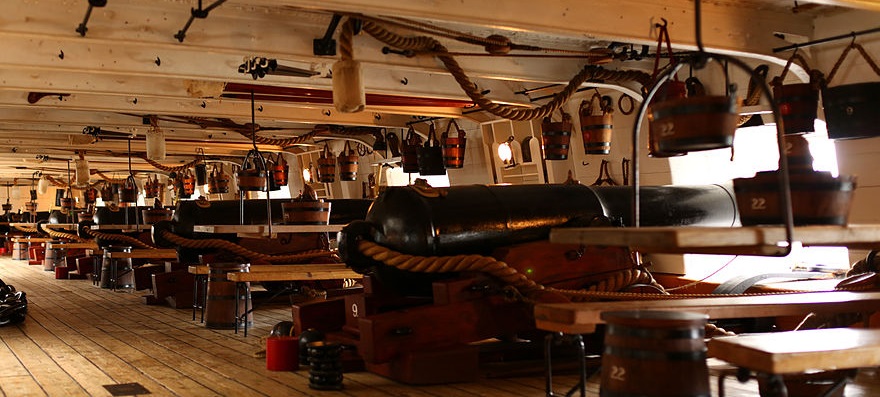
Warrior's gun deck
Backing up the appearance were Warrior's guns, which were also innovative. Most previous warships had weapons no heavier than 32 pdrs, while Warrior was designed to carry 36 68-pdr guns on the main deck, direct descendants of the weapons used at Trafalgar, with two more as chase guns on the upper deck to fire fore and aft. Only 26 of the guns would be within the citadel, but this was still enough firepower to deal with almost any ship afloat. Their gunports would be 15' apart, giving each gun crew plenty of room to work. Most previous British warships had crammed their guns in, leading to each crew interfering with the working of adjacent guns. The gunports themselves were narrower than on previous ships, with the carriage of each gun attached to a bolt near the gunport to allow it to pivot and still point through the port. The ports were also taller, allowing Warrior to engage at long range.
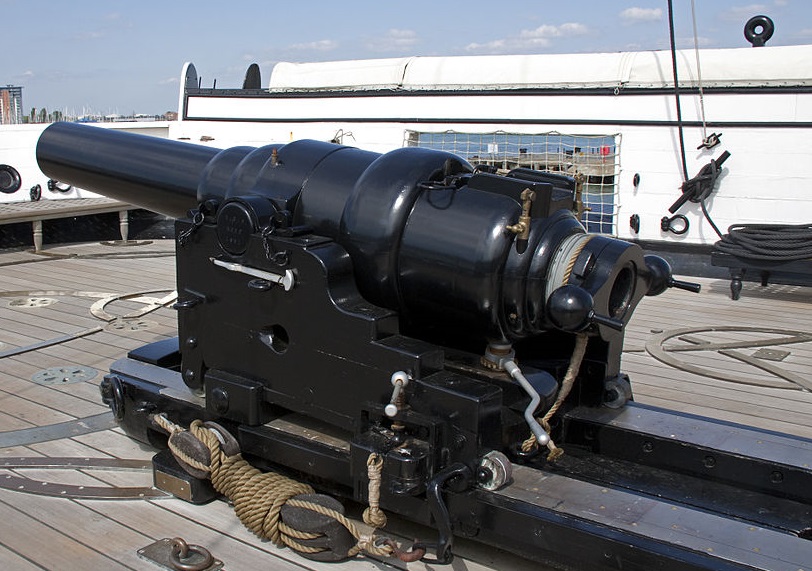
One of the chase 110 pdrs on the upper deck
However, while the ship was under construction, the decision was made to adopt the Armstrong rifled breechloader, and 14 of Warrior's guns were replaced with the new guns, 10 110-pdrs and 4 40-pdrs. The 110-pdr was not particularly effective, and the replacement was carried out in a haphazard manner, and the mixing of the batteries might have caused serious problems had Warrior ever seen action. During her l864-1867 refit she was rearmed with a mix of 7" and 8" rifled muzzleloaders.
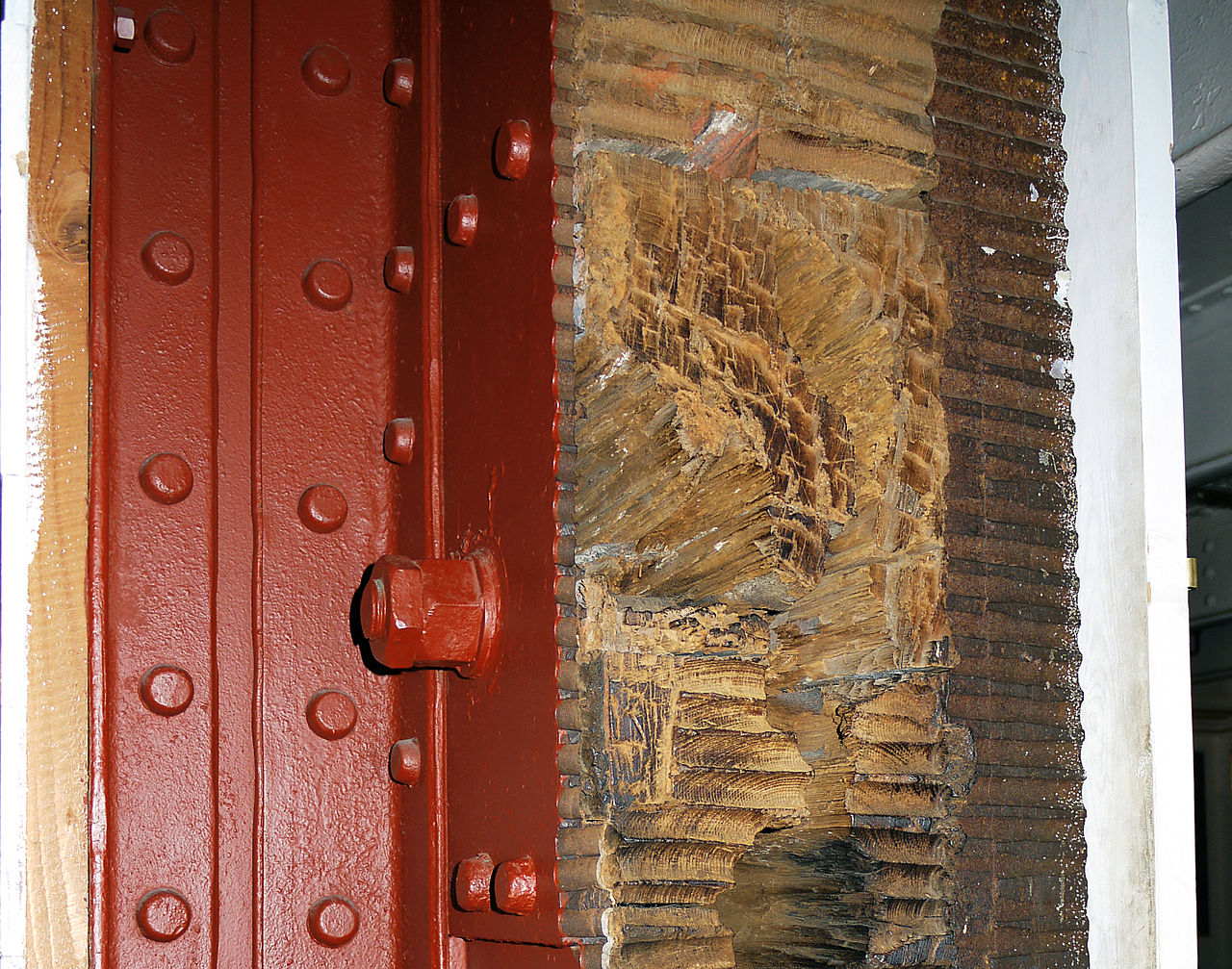
A section of Warrior's armor
The armor to protect all of this was 4.5" of wrought iron over two layers of 9" teak and the 1" iron hull. The teak acted to absorb the shock of impacting shells, which otherwise would have splintered bits off the armor and broken the bolts holding the plates in place. Warrior's armor was the result of extensive firing trials in the later half of the 1850s, ranging from simple tests of plates ashore all the way to full-scale tests on ships refitted with armor plating over their hulls. The plates themselves were produced via hammering .5" plates of wrought iron together, although most later warship armor would instead be rolled.
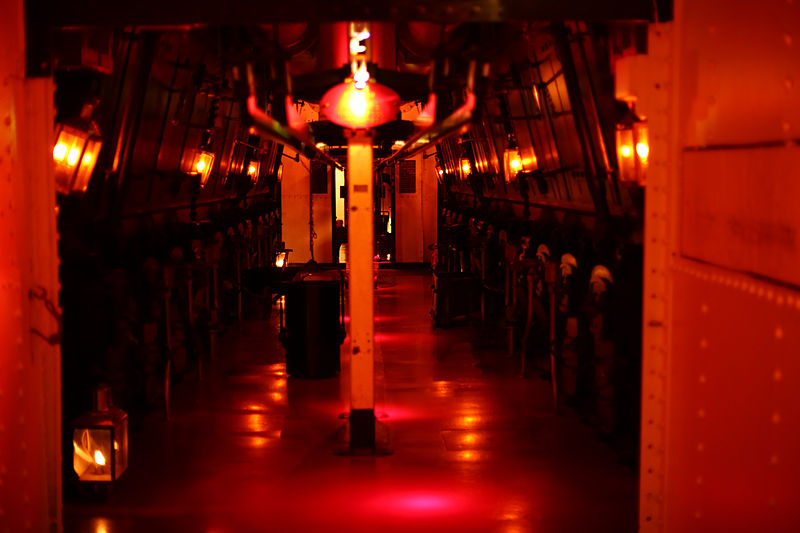
Warrior's boiler room
Warrior was designed as steam was on the cusp of replacing sail as the main propulsion system for warships. Her role as a frigate meant that she had a full sailing rig to give her oceanic range. For battle, or when she needed to sail against the wind, a steam engine was fitted. It was a Penn trunk engine producing 5270 hp. Steam for it was produced by 10 box boilers, and the giant propeller could drive the ship at 14.3 kts on trials, making her the fastest warship of the day and prolonging her service life in the face of improvements in naval engineering. To improve performance under sail, the funnels were designed to retract, and the largest hoisting propeller ever made was fitted.3 In practice, steam turned out to be important enough that neither feature was used more than a handful of times. When both steam and sail were working in concert, she managed the unheard-of speed of 17.5 kts, a value that went unmatched for a decade.
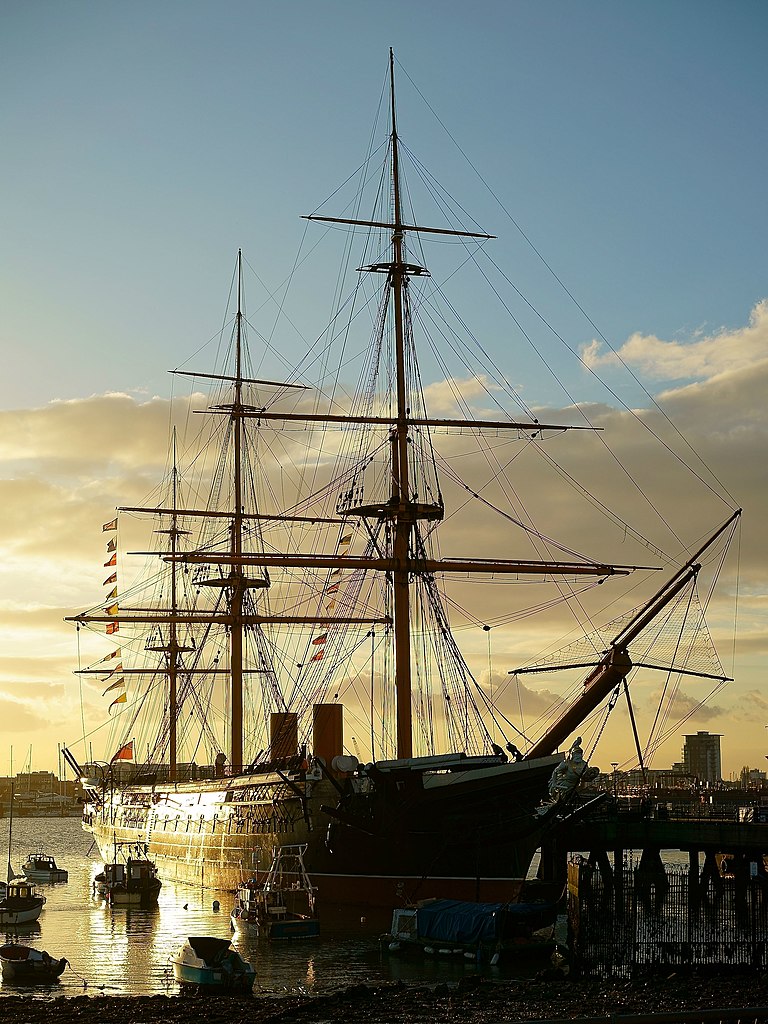
Ultimately, Warrior was successful in her role of deterring the French, and anyone else, from challenging British seapower, which would remain supreme for the next half-century. She was decommissioned in 1881 without seeing action, and remained in reserve until 1900, when she was turned into a hulk. Over the next three-quarters of a century, she was used for storage, classroom space, and even as an oil depot. But in 1979, she was donated to the Warrior Preservation Trust, who have done a fantastic job restoring the ship for display. Today, she is a museum at Portsmouth, England, the traditional home of the Royal Navy. I very much look forward to going to see this ship that revolutionized naval warfare in a way unmatched by any single ship in history.
1 The Dockyards had no experience with iron construction, hence the use of wood. ⇑
2 Another reason for this was that iron hulls could be fitted with watertight bulkheads, which didn't really work in wooden hulls, so the ends could be subdivided to protect them from damage. ⇑
3 Yes, this is exactly what it sounds like. The propeller could, in theory, be detached and hoisted up so it wasn't in the way when Warrior was sailing. This took about 600 men on the ropes. ⇑

Comments
this ship that revolutionized naval warfare in a way unmatched by any single ship in history.
The only rival I can think of that comes close is
USS Nautilus (SSN-571)
maybe USS Holland
I'll defend myself against Holland by pointing out that she wasn't that revolutionary herself. Against Nautilus, I'll point out that submarines are boats instead of ships.
Perhaps HMS Argus? Carriers are a big deal too.
Argus falls into the same category as Holland. Yes, she's historically important as the first in a line that would go on to have a huge impact, but her arrival didn't immediately change things. Nautilus is probably the only serious competitor to Warrior on that front and
I forgot about hershe's a boat, not a ship.I'd love to see you do something on the SS Great Eastern. She was launched prior to the Warrior and was all-iron, steam-powered, and several times bigger! Not a warship, mind you, but still. Had there been a war, perhaps she would have been of use nonetheless. Especially if war had broken out between the UK and France in 1858.